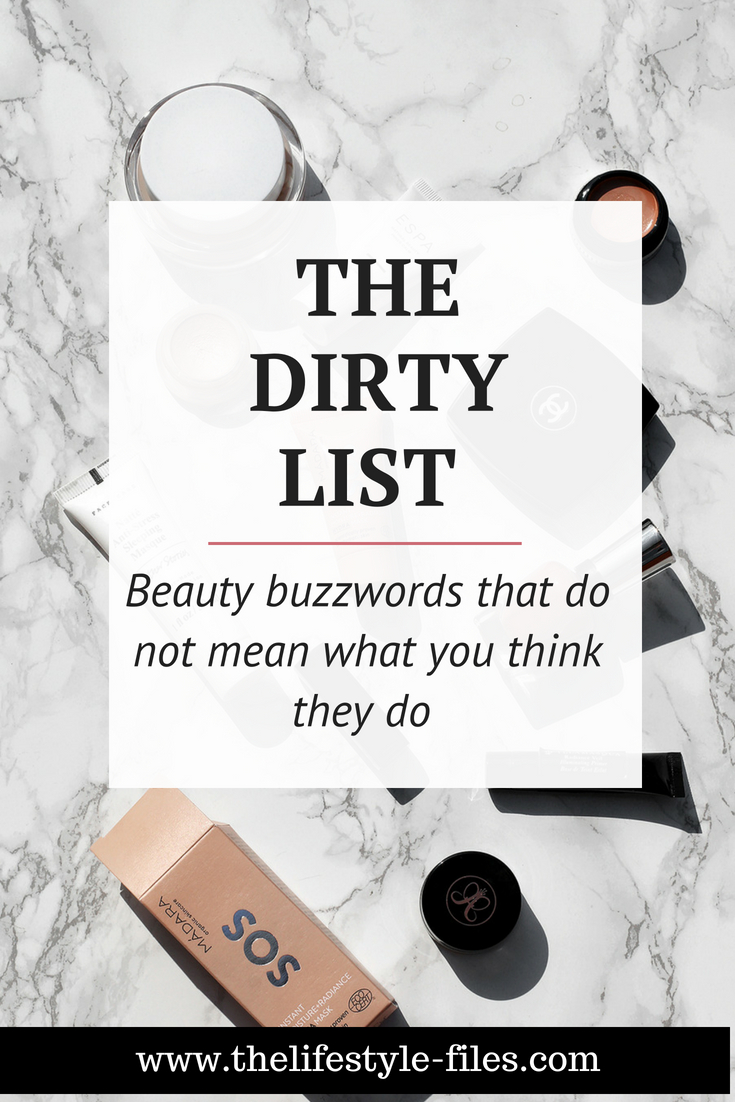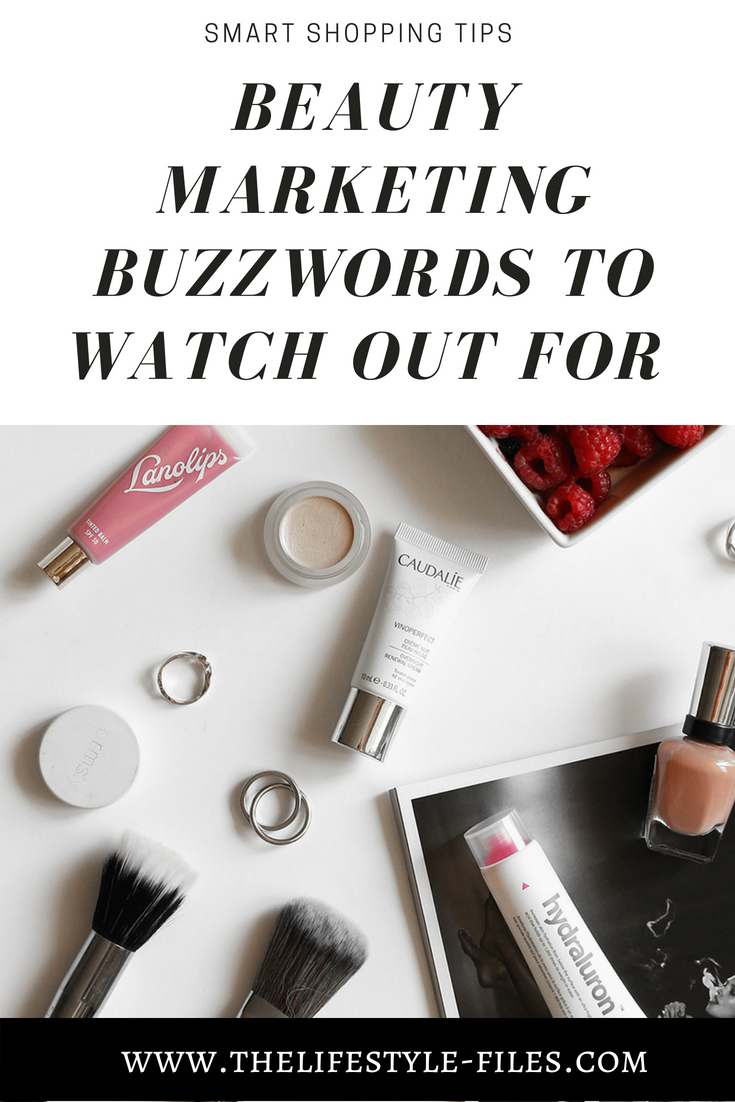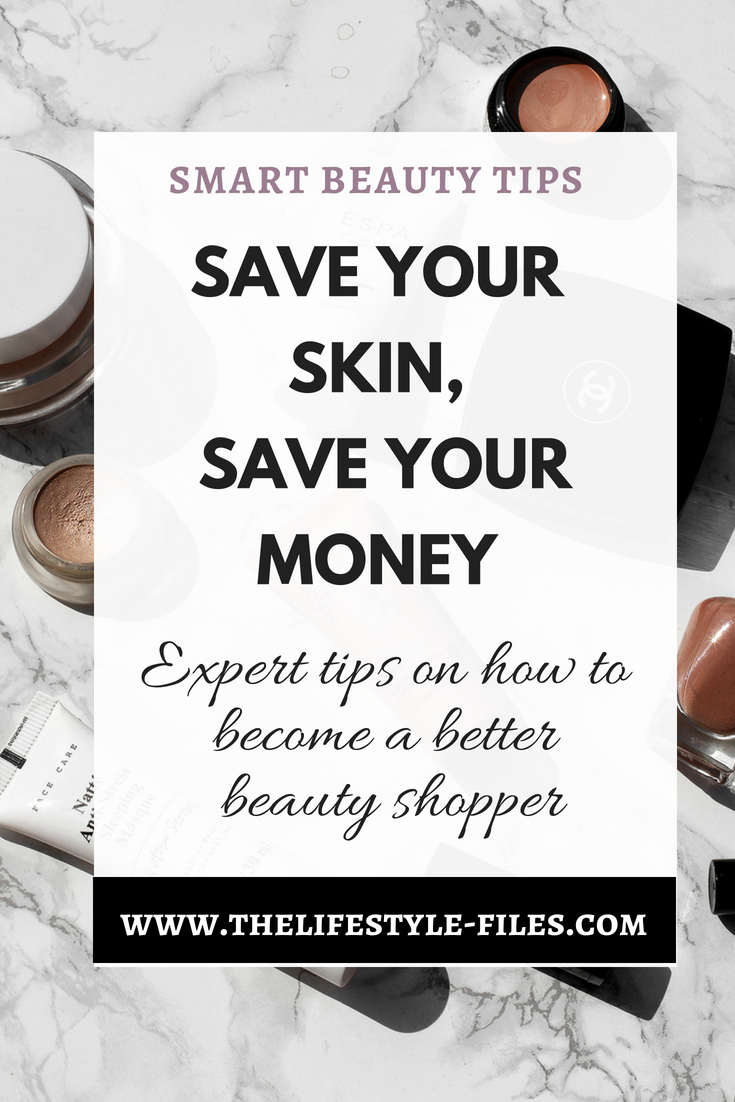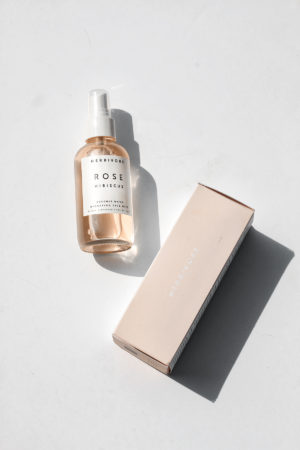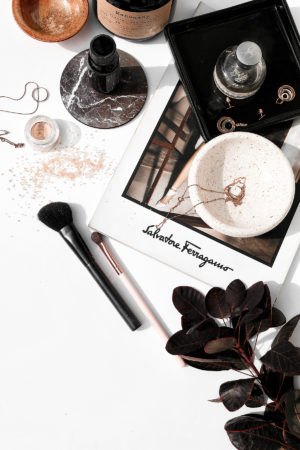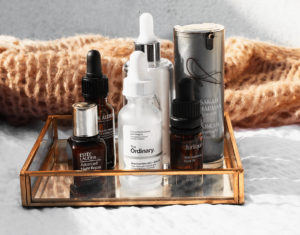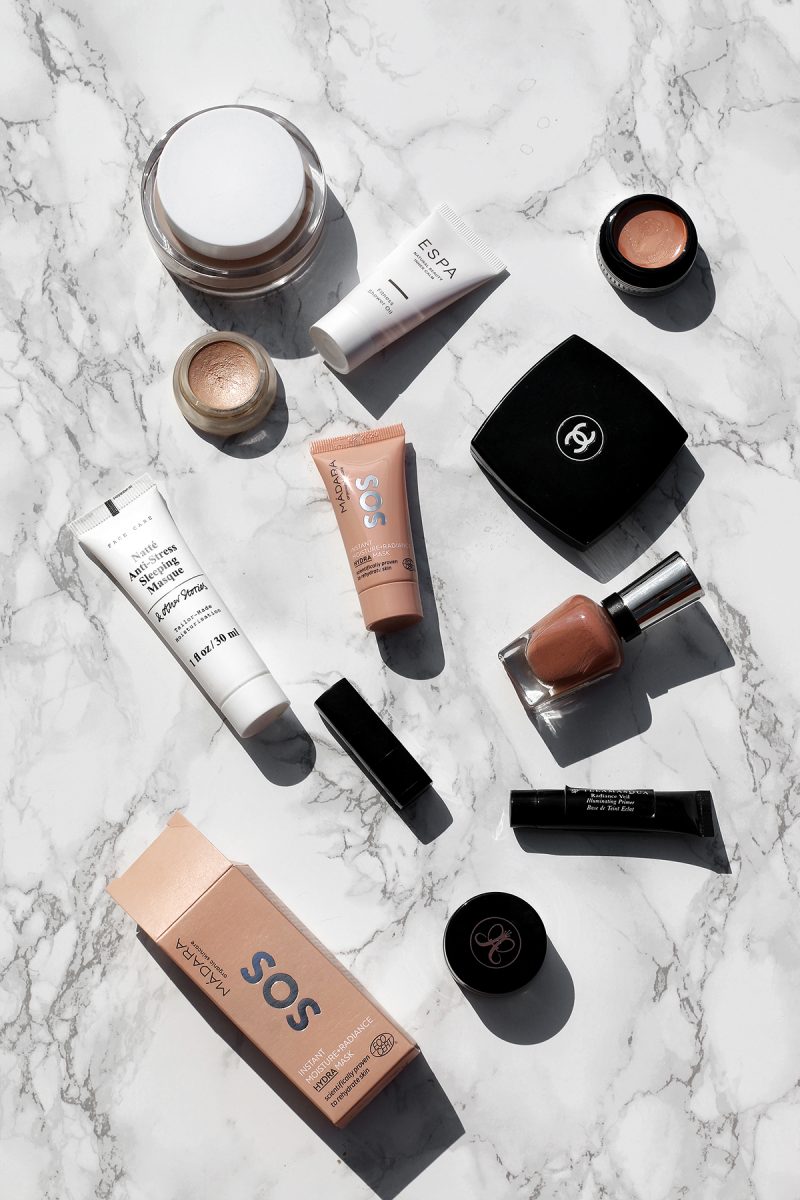 OK, banning may seem a little harsh, especially as I’m usually not a fan of censoring. But the world of beauty marketing is problematic, to say the least.
OK, banning may seem a little harsh, especially as I’m usually not a fan of censoring. But the world of beauty marketing is problematic, to say the least.
It’s a multi-billion dollar industry with a cutthroat competition for consumers’ attention and money. And unfortunately, most of it is not regulated enough, so there are dozens of loopholes for beauty companies to exploit in order to make profits.
I love skincare and beauty, truly. But that doesn’t mean I turn a blind eye to all the deceitful advertisements or misleading marketing claims. It is exactly my love for and interest in the industry that drives me to gain as much information as possible and become knowledgeable about ingredients, claims, and the truth behind the fancy and very alluring marketing claims.
I don’t write these types of smart beauty posts to scare anyone. I don’t think this industry behaves worse than any other. There are good things and initiatives to embrace and celebrate and not-so-go things to shed light on.
Some of the claims and beauty marketing buzzwords fall under the latter category and they are the ones that made it to this list. These are the terms I’m usually wary of when I see them – and I’ll try to tell you why.
The beauty marketing buzzwords to watch out for
Chemical-free
I already wrote a whole rant about this topic, but let me just reiterate – there is no such thing as chemical-free. A chemical is simply any substance made of matter, thus everything is made up of chemicals – food, water, air, the body. Chemical-free is thus just a totally misleading, false marketing claim intended to suggest that something is supposedly cleaner or non-toxic – whatever that means.
Toxic/Non-toxic/clean/safe
The toxic/non-toxic claim is becoming incredibly widespread and is not without problems or controversies.
The simplest definition of toxic is poisonous. If we follow this kind of logic, it would mean that a lot of beauty products are actually poisonous for our health. Or even that brands knowingly use certain ingredients without disclosing their (proven or not proven) health risks, thereby effectively poisoning their customers.
And of course, there are precedents for that kind of behavior or for research unearthing new findings on the risks of certain ingredients. There might be risks – both universal and highly personal. But that doesn’t mean that the beauty industry, on the whole, is totally unsafe or that certain products are healthier or safer just because they use the term non-toxic on their packaging. Especially as words like clean, safe, or non-toxic mean nothing in legal or regulatory terms – they are free to use by anyone and everyone. I’m all for incredibly strict regulation, continuous inspection, and becoming more informed as consumers. But I would also warn against throwing around claims like toxic or poisonous totally carelessly and without foundation just to capitalize on people’s fears and push other products.
Read this article for more info on the toxic/non-toxic claims and natural beauty marketing
Natural/Organic/Plant-based/Botanic
My main issue with the natural beauty market is that it’s more or less totally unregulated, resulting in a chaos of marketing buzzwords as well as a dozen different seals and certificates. There are currently no legal standards for the use of words like natural, plant-based, botanic, green and no regulating or overseeing body. In theory, everyone could slap the word green on a label and it would essentially mean nothing. A lot of natural beauty brands try to be ethical about it and use third-party certification procedures, however as long as they are not standardized, it’s hard to compare different seals and approvals.
The problem is exacerbated by the phenomenon of greenwashing – dressing up a product as eco-friendly or green when in reality, it’s far from that. This can range from simply changing the packaging to something natural-looking (think plants and green) or adding a single botanical extract and then promoting the product as green or natural. I’d like to remain optimistic and think that as the natural lifestyle/beauty/food market is becoming stronger and stronger, authorities will catch up and at one point will get down to regulate the industry so that we consumers can finally know what it is really that we’re buying.
Hypoallergenic
This term has been used for more than half a century, but as is the case with most scientifically-sounding beauty marketing words, it lacks a proper medical definition as well as an official certification process or regulation. Products that are labeled hypoallergenic are thought to contain less allergy-causing ingredients, but, once again, this is a grey area as companies are not required to pass certain tests or criteria in order to use the term on their labels.
Dermatologist-tested/Dermatologist-recommended/Clinically-tested/Clinically-proven
There are many variations of this term that suggest that the product is a result of intensive cosmetic/medical research or is endorsed by professionals. In reality, these are simply totally unregulated marketing terms. We don’t know what kind of clinical tests they went through, how many people tested them (1? 1000? 1 million?), what the test results were, who recommends them, why, and so on. In fact, clinically-tested products may not have been tested at all.
Repair
Repair is highly problematic for me, as once again, it implies a lot of things without actually giving proof, or, worse, making false claims. Take split-end remedies for example. Split-ends are already inactive (basically dead) parts of the hair, therefore nothing can put them back together. So, technically, it cannot be repaired. But it can be improved with various silicone-based or hydrating products, so you think it is kind of repaired. See the problem here? This is where advertising that uses words without a proper definition lead.
Anti-aging
Anti-aging is one of my personal pet peeves as it’s such a loaded and misused term. First of all, nothing can stop aging. Some things may slow or conceal the symptoms, but at the end, the skin will show signs of aging, no matter what. Second, it plays on people (mostly women’s) fear of aging and pushes products on them to capitalize on this fear (anti-aging products are often pricier). And finally, even though anti-aging is probably the most widely used term, there are only a handful of ingredients that are proven to have any kind of effect on the aging process (and even those cannot totally stop it), which means that it’s used even for things that have no anti-aging effect whatsoever. That’s the price of another unregulated area I guess. You can read more about the anti-aging marketing industry and a couple of actually anti-aging ingredients in this blog post.
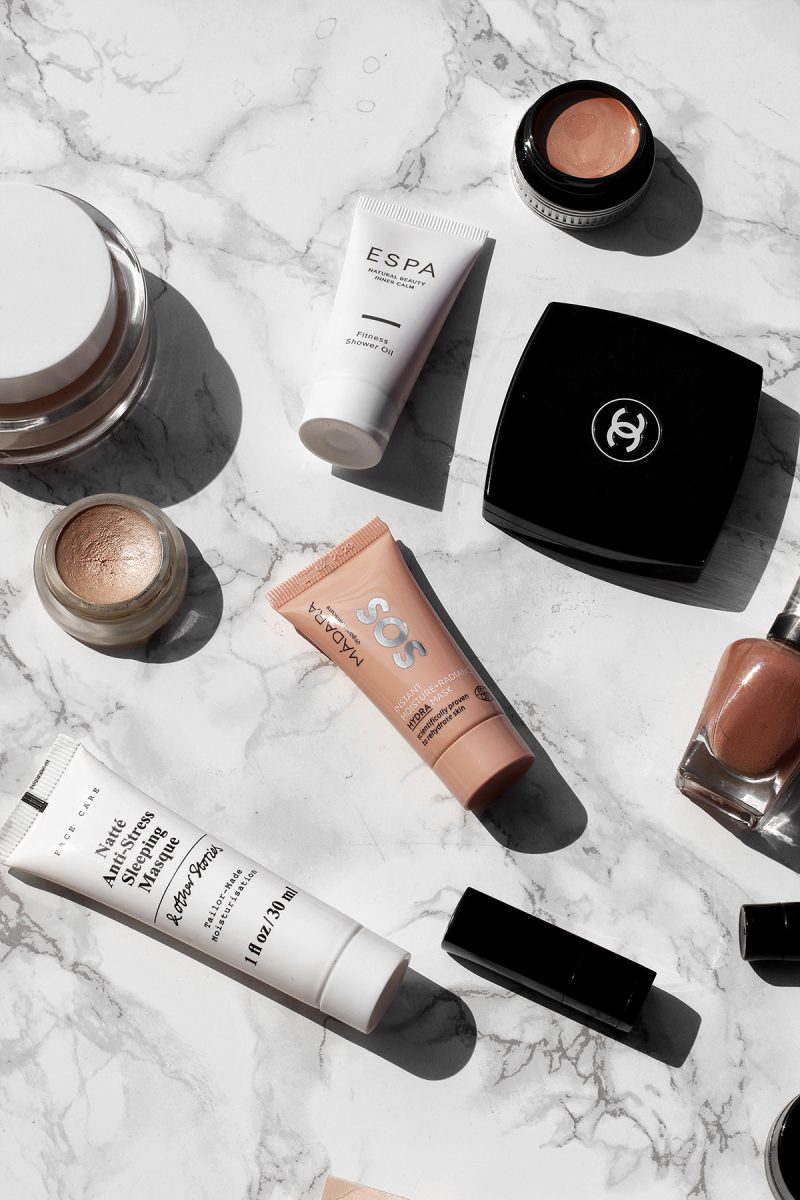
Non-comedogenic
Comedo is a clogged pore resulting in some type of spot (blackhead or whitehead). The beauty industry likes to use the term non-comedogenic to imply that the product is safe to use for acne-prone skin as it will not clog the pores at all. The problem? Once again, this is a totally unregulated area as there are no proper terms or laws specifying how companies can and should use this term. The comedogenic nature of certain ingredients is usually rated on a scale, but it is also very personal – what may be problematic for some people may be totally fine for others. The issue is that consumers think they are totally safe by buying non-comedogenic products, but there is no 100% guarantee, unfortunately.
Unscented
Unscented is a misleading term as some people may think it means fragrance-free – but it doesn’t. A fragrance is an ingredient added to a product to smell a certain way. (Btw, the term fragrance is problematic in itself as it looks like that it’s only one ingredient, but in reality, it can be a mix of a thousand different things and the consumer will never know what exactly it contains. Read more about it here). Unscented doesn’t mean there’s no fragrance added – it can mean that certain fragrance molecules have been used as masking agents to conceal the sometimes not so pleasant smells of certain ingredients.
Fragrance-free
So, unscented doesn’t mean fragrance-free, then fragrance-free must actually mean that absolutely no fragrances have been added to the product, right? Sadly, not always. As this whole fragrance area is totally unregulated by the FDA, brands can use fragrance-free on the label when no additional fragrances have been added – apart from the natural fragrance molecules of ingredients (like essential oils). Sometimes they go even further and leave off the fragrance ingredient, but still list fragrance components like linalool or geraniol as separate ingredients (more info, including a list of fragrance components to look out for here.) This is, of course, a problem as fragrances can be allergy-inducing for a lot of people – who unfortunately have no way of knowing whether they are exposed to them.
Patented formula
A formula can be patented if the mixture of ingredients and/or the technology are deemed special or new, however, that doesn’t guarantee that the results are there as well.
Reduces the appearance of
This type of wording is the beauty companies’ way of navigating the fine line between cosmetic products and drugs, as there IS a difference between the two. According to the FDA, a cosmetic product is anything “intended to be rubbed, poured, sprinkled, or sprayed on, introduced into, or otherwise applied to the human body… for cleansing, beautifying, promoting attractiveness, or altering the appearance.” A drug, on the other hand, is “intended to affect the structure of any function of the body of man or other animals.”
So, for example, a beauty product according to the rules, cannot say that it increases collagen production because that would be the alteration of a fundamental body function. The company would then need to label the product as a drug and it would be subject to much stricter regulations. So, to avoid this, they use phrases like reducing the appearance of fine lines, younger looking skin, or skin soft to the touch – all claims that imply a radical change in skin, but at a closer look, these are only very subjective, empirical claims with no scientific proofs whatsoever.
The magic buzzwords
beautiful, effective, firming, flawless, glowy, healthy-looking, hydrating, illuminating, invigorating, luminous, luxurious, nourishing, miraculous, plumping, radiant, refreshing, rejuvenating, replenishing, silky smooth, vibrant, volumizing, wonderful, youthful
The magic words are the classic, powerful slogans and adjectives that color all beauty advertisements and conjure up images of wonderful skin transformations and the promise of perfect beauty. These are the words that sell. As a communications professional myself, I, of course, understand the need to use them. However, I also think that we, as consumers, should be aware of their use as well as their manipulative power.
Always look beyond the buzzwords.

